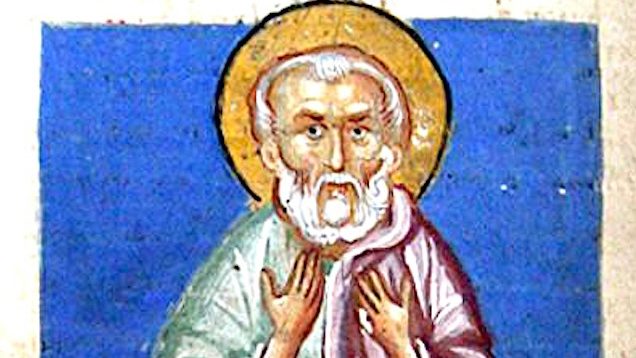In spiritual matters, he may be the most influential author you’ve never heard of.
He thought up the category that later thinkers would develop as the Seven Deadly Sins. In the Greek East, he devised a technical vocabulary for spiritual theology that, according to one modern authority, has “remained thereafter standard.”
His name, Evagrius, was a household word in the Church of the late fourth century. During his lifetime he sought increasing solitude, and yet his writings made him all the more famous.
And then, 150 years after his death, his name became mud. Evagrius’ writings were suppressed and destroyed — only to turn up centuries later blended with the doctrine of Buddhists in China and perhaps Tibet.
He was a golden child — brilliant, dapper, and good-looking, and he could have excelled in any worldly undertaking. But he was drawn to the service of God in the Church. While still very young, he attached himself to the greatest theologians of his time. He was first a disciple of St. Basil the Great and then an adviser to St. Gregory Nazianzen, who was bishop in the capital city, Constantinople.
It was a time of rapid change in the world. A new emperor, Theodosius, was on the throne, and he summoned the bishops of the world to meet in an ecumenical council to put away troublesome heresies forever. Important people in Church and state sought the advice of young Evagrius, who stayed on in Constantinople even after his bishop, Gregory, took a sudden early retirement.
History was in the making, and he was close to the center of it. But he had lost his center — and soon found himself smitten with the wife of a court official, who returned his affection. In a dream he saw his future if he continued on his current course. He would be denounced, chained, jailed, and tortured. That very day he packed and fled Constantinople for Jerusalem.
But he still held on to his vanity and went about his new city in fine garments. Falling ill, he was visited by St. Melania the Elder, who drew a confession out of him. She urged him to repent and to renounce human company — taking up the monastic life. Soon his health improved, and Evagrius put on the monastic habit and left to join the solitaries in Nitria in Egypt. After two years there he left for greater solitude in the desert of Kellia. There, in chosen isolation, he wrote the books whose influence has been vast, in vastly different worlds. He stayed there for the remaining 13 years of his life, living on bread and water, guiding other ascetics, praying always and writing much. His spiritual father was St. Macarius the Great, the pioneer of monastic community organization.
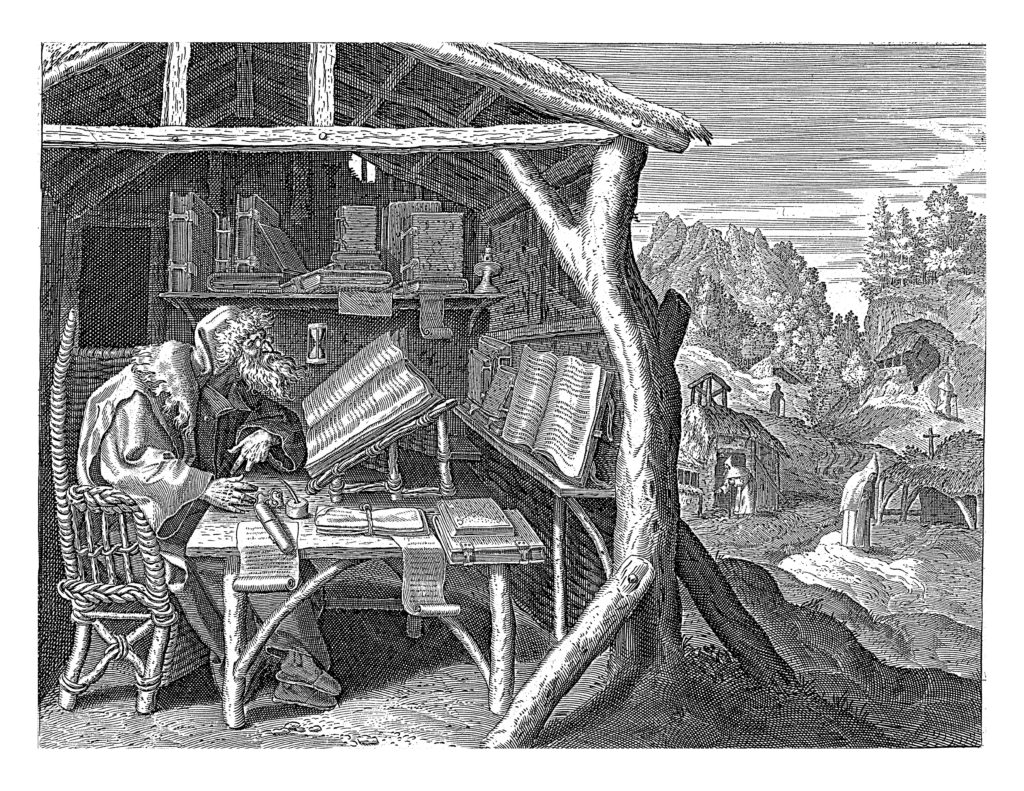
Evagrius crafted perfect summaries of spiritual principles, and Christians are still quoting him, though they don’t always know it’s Evagrius they’re quoting. “A theologian is one who prays,” he said, “and one who prays is a theologian.”
Thus he lifted the ascetical life above intellectual pursuits. Yet he was the first of the so-called Desert Fathers to produce systematic, philosophically informed studies of ascetical practice. He identified the way to holiness and the stages along the way. He diagnosed temptations and distractions, and he prescribed remedies.
Earlier ascetics had not been writers or scholars, and their literature consisted mostly of loose collections of practical sayings.
His life seemed anointed. But the fly in his ointment was the influence of Origen.
An Egyptian Christian of the third century, Origen was a pioneer in the field of biblical studies. He produced the first critical, multilingual edition of Sacred Scripture. And he wrote commentaries on many of the books of the Bible. He also wrote works of apologetics and on prayer. His book “On First Principles,” described the architecture of Christian theology: the movement away from God, the encounter with Christ, and the return to God, a “great parabola.” Origen had a profound influence on his own generation and on Christian intellectuals in the century that followed, including Nazianzen and Basil.
But in the late fourth century came a tidal wave of criticism of Origen, led by men of colossal international renown: St. Jerome and St. Epiphanius of Salamis.
Origen had proposed ideas that were problematic. He believed that souls pre-existed their life in a body; and he believed that all creatures would eventually be restored to friendship with God — even the demons, even Satan. He insisted that the resurrection body of Christians would not be material, but entirely spiritual. And his description of the Trinity seemed to support the idea of the Son and the Spirit being subordinate to the Father.
These ideas were condemned by ecumenical councils, but only after Origen was long dead. Churchmen even tried to excommunicate Origen posthumously, even as theologians expressed doubt that the action was possible.
Next after Origen were authors who were considered his followers, and chief among them was Evagrius. At a synod in Constantinople in A.D. 543, the works of Origen and Evagrius were condemned. Both men had been the heroes of many monks in Palestine, but now they were placed under imperial censure.
And so the handsome, dapper, and brilliant monk gradually faded from memory throughout the Latin- and Greek-speaking world.
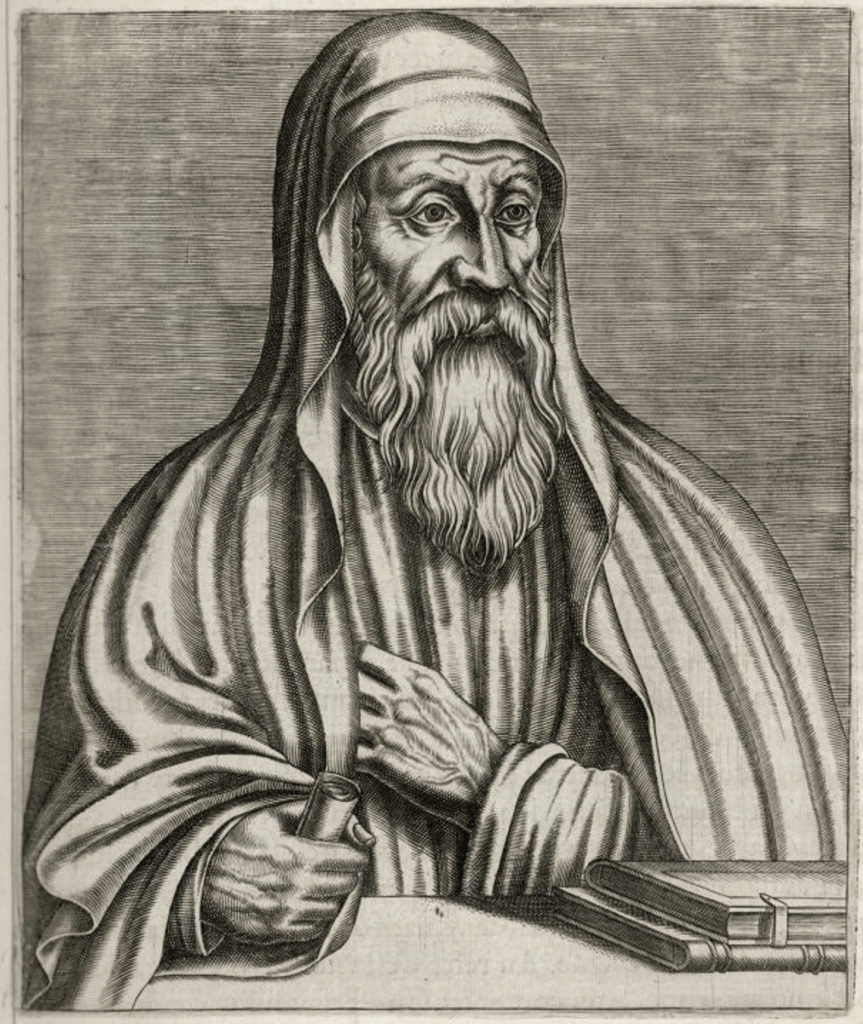
But his teaching lived on in unusual ways. In the Greek world the keepers of the monastery libraries just replaced the title pages of his books — attributing the contents to some monk of untarnished reputation. So his teaching lived on under several aliases, including “Nilus the Ascetic,” “Peter of Damascus,” and “Evagrius the Bishop.” And, according to the most recent edition of “The Philokalia,” the most revered Orthodox manual of spiritual doctrine, “his teachings … have exercised a decisive influence upon subsequent writers.” His vocabulary remains the vocabulary in the field of spiritual theology.
But recent research indicates that his influence also ran far in an unexpected direction. Father Francis Tiso, a U.S.-born scholar who taught at the Pontifical Gregorian University in Rome, believes that Evagrius has exercised a profound influence over the development of Tibetan Buddhism.
It seems that, when Evagrius was banned in the sixth century, the decrees held no sway over the Syriac Church of the East, which had fallen out of communion with Rome and Constantinople. Its bishops and monks continued to prize the works of Evagrius and translated them into the languages of their mission territories.
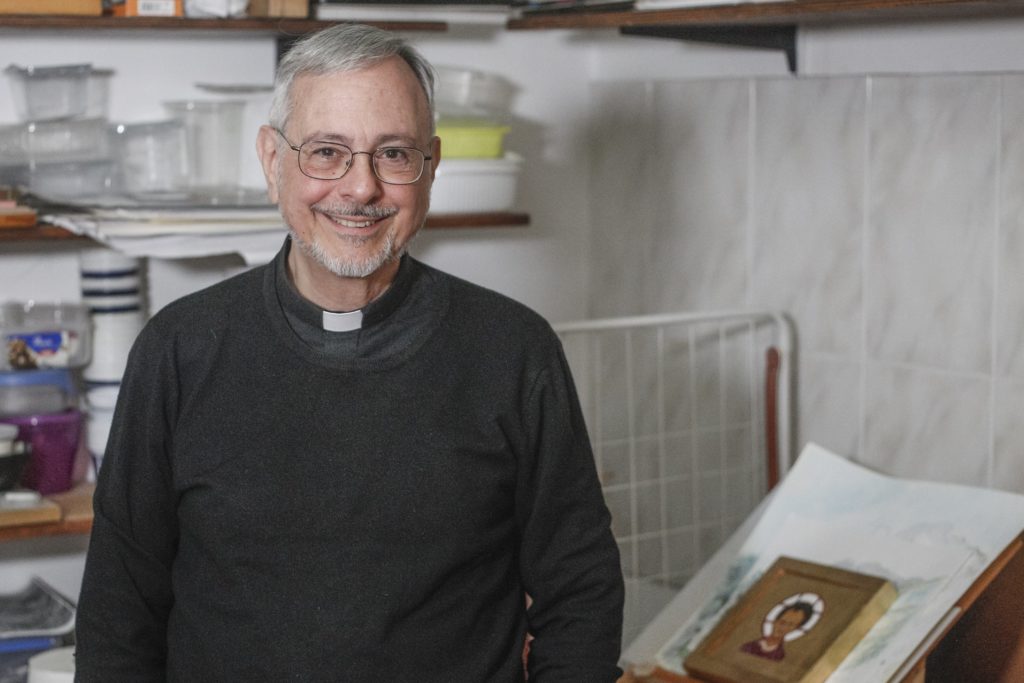
Tiso told Angelus, “In the 640s, shortly after the Islamic conquest of the Middle East, … the Syriac church launched a concerted missionary movement that established churches, monasteries, and dioceses across the lands of the Silk Road, reaching the Chinese capital during the Tang Dynasty.” In 792 the church’s patriarch, Timothy I, wrote that he intended to name an archbishop for the nomadic Tibetans. Where there is an archbishop, there are several bishops — in this case they would have, according to Tiso, “moved with the nomadic tribes and lived in yurts.”
Contact between peoples led to dialogue between religions, Tiso added. “We do know that Buddhists and Christians engaged in serious dialogue during the period 640-850, and there is even a Tibetan text found at the oasis of Dunhuang that shows how a Tibetan Buddhist understood Jesus the Messiah to be the friend of mankind, sitting at the right hand of God in the seventh heaven!”
An eighth-century Christian book, “Profound and Mysterious Blessedness,” was discovered in a cave around 1912 and, according to Tiso, “It shows St. Peter asking Jesus Christ to explain the Chinese Buddhist terminology and values so that the Syriac Christians in China might understand the views of their dialogue partners.” Jesus “explains merit, voidness, insight, meditation, renunciation, selflessness, non-action, and virtue to Peter, who represents the historical memory of the Church of the East.”
At the time, Buddhism in China was at a high level of sophistication, with many teachers coming and going from East and South Asia. In Tibet, however, the religion of the Buddhists was at an early stage of development. Tiso explained: “Tibet was a remote territory where the royal cult and veneration of mountain gods were prevalent. ... At the peripheries of the Tibetan Empire, dialogue with the Syriac Christians offered an opportunity to develop a new kind of contemplative worldview — one formed by the thought of Origen and Evagrius.”
Tiso’s book “Rainbow Body and Resurrection” (North Atlantic Books, $24.95) traces the doctrines and practices of Tibetan Buddhism that correspond to early Christianity and especially the teachings of Evagrius.
By the time of the Middle Ages, Tibetan Buddhists began to speak of phenomena — such as the resurrection of the body and the incorruptible bodies of saints — that are otherwise widely and exclusively associated with Christianity.
Before this time, said Tiso, “there was no Buddhist doctrine of the resurrection of the body. They cremated their saints and built reliquary stupas — large circular monuments — for the veneration of those relics.”
They also used language similar to that of Evagrius, writing as he did of an inner light that survived the death of the body. They spoke in almost Evagrian terms about spiritual warfare with demons. It seems evident that there was a lively exchange of ideas between Christians and Buddhists in China and Tibet.
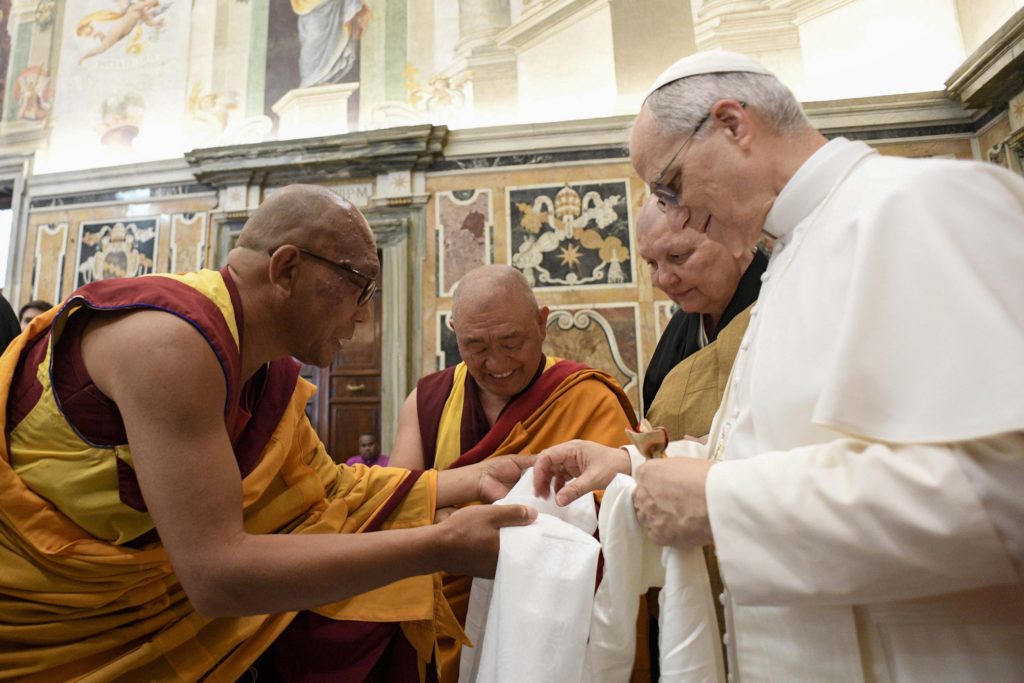
An important figure in the story is Jingjing, a bishop who lived in the Tang capital in the 780s. Tiso explained: “He befriended the Buddhist monk Prajna, who was born in Afghanistan, and who had studied in the great Buddhist academies of India and Sri Lanka before moving to China. It seems that Jingjing taught Prajna Chinese, and together they translated a Mahayana Buddhist text on the Six Paramitas [virtues].”
For this cooperation they suffered misunderstanding and were censured by the official Chinese Buddhist translation bureau. But Prajna eventually became head of that very government agency and was then in a position to promote the kind of work he had done with the bishop Jingjing.
It is through figures like Jingjing and Prajna that ascetical ideas from Evagrius may have found their way into Tibetan Buddhism.
Tiso served the U.S. Conference of Catholic Bishops as an official for inter-religious dialogue from 2004 to 2009. He has participated, on behalf of the Vatican, in international Catholic-Buddhist dialogue. He finds inspiration in the story of Evagrius, forgotten by Christians, assimilated by Buddhists.
“The fact that there was a fruitful dialogue between Christians and Buddhists in China during the eighth century is, for me, a sign of hope for humanity that can be renewed in our own time.”
A key lesson, he added, “is for both sides to learn the language of the other, and to have a clear understanding of the ideas that underlie the terminology. In that way, we can recognize what we in fact do believe in common, and we can discern what is distinctive in each tradition.”
Christians have, he said, “a missionary task not only to help others know who Christ is and always will be. We also have a special calling to be able to recognize, discern, and articulate the voice of the Good Shepherd wherever that voice may sound.”
One of the great benefits of this process is that it forces us to learn more about our own heritage. Tiso believes we need to “recover our own all-too-fragile tradition of contemplative prayer” and the mystical path “that Evagrius and his heirs left us as a priceless gift.”
